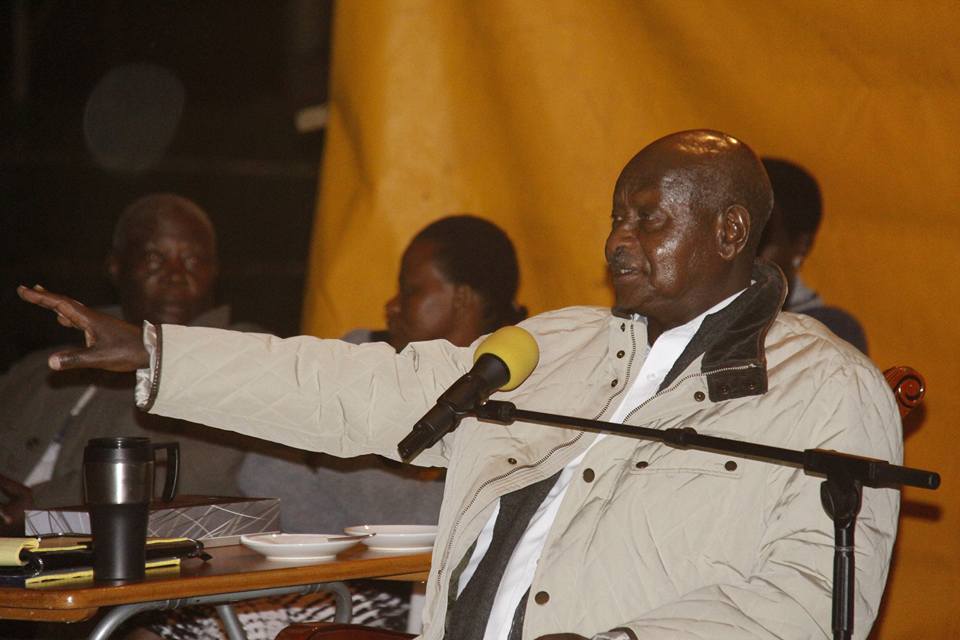The first season rains for this year 2016, which normally begin during the month of March, were more than three weeks late and below average in the North-Western, Central and Eastern parts of the Country.
Households who had planted crops according to the usual first season calendar of March never witnessed germination.
Much of the crops planted later after the rains arrived were also scotched by the Sun due to below average rainfall.
The second season rains (August – October) also came late at what is supposed to be harvest time in most parts of the country.
There was also a dry spell during the period May-June which heavily damaged crops in many parts of the country.
This is all happening after a very long period of drought in the previous year 2015 in most parts of the country.
Our biggest fear now is the current la nina conditions (extended-dry-spell) in some parts of the country which is forecasted by the National Meteorological Authority to last between September 2016 and March 2017.
The sub regions of Karamoja, Teso, Lango, Acholi, Bukedi, West Nile, parts of Busoga and most districts along the Cattle Corridor have witnessed massive crop failure, leading to little or no harvest that has now resulted into the severe food crisis.
The current food security situation in the country ranges between minimal and crisis. A few parts of the Country are in emergency phase of food insecurity, however, there is fear if individuals and families do not manage the available food stocks at household levels well, the situation can quickly deteriorate to the emergency and famine stages of food insecurity within the next two Months. This is the main reason why government is today interacting with the media to send a strong message to the population
25% of the population in Isingiro District are in an emergency phase of food insecurity; meaning they access half a meal or nothing at all in a day.
65% of the population in Karamoja subregion are in a crisis phase of food insecurity; meaning they access one meal or half a meal in a day.
35% of the population in the districts of Katakwi, Amuria, Kumi, Bukedea, parts of Serere and Kaberamaido are in the same phase with Karamoja subregion (crisis); meaning they access one meal or half a meal in a day.
The standard dietary consumption in Uganda is three meals in a day (breakfast, lunch and supper).
50% of the people of Koboko, Yumbe, Moyo, Maracha, Arua, Zombo, Nebbi, Adjumani, Amuru, Nyoya, Gulu, Pader, Lamwo, Kitgum, Agago, Soroti, Ngora, Amolatar, Pallisa, Butaleja, Rakai, Isingiro and Tororo are in a stressed phase of food insecurity; meaning they access one and half meals in a day.
The districts of Oyam, Apac, Kiryandongo, Masindi, Bulisa, Kyankwanzi, Nakaseke, Kiboga, Mubende, Luwero, Kyegegwa, Sembabule, Kiruhura, Lwengo, Ntugamo, Kamuli and Kibuuku are in a minimal phase of food insecurity, meaning the people can still afford all meals though stocks are running low.
The following districts are fairly food secure; Kisoro, Kabale, Kanungu, Rukungiri, Mitooma, Bushenyi, Rubirizi, Ibanda, Kasese, Kabarole, Bundibugyo, Kyenjojo, Ntoroko, Kibaale, Hoima, Masaka, Lyantonde, Kalungu, Butambala, Mityana, Wakiso, Gomba, luuka, Iganga, Buikwe, Mukono, Kayunga, Buyende, Kampala, Jinja, Mayuge, Bugiri, Busia, Namayingo, Buvuma and Kalangala.
The total population in need of urgent relief food, as of now stands at about 1,300,000 people (the sub-regions of Karamoja, Teso, Lango, Acholi, Bukedi, West Nile, parts of Busoga and some districts along the Cattle Corridor).
Water Scarcity Situation
The following subregions and districts are facing severe shortage of water for both domestic use and livestock rearing.
The subregions of Karamoja, Teso, Bukedi, West Nile and most districts along the Cattle Corridor.
Pasture situation
The same districts facing water crisis are also facing pasture shortage. Therefore, the districts mentioned above are all facing pasture shortage
Actions expected of individuals and families
Individuals and families are strongly advised to desist from selling their harvests despite the current good prices being offered for food items especially by traders from neighbouring countries
Individuals and families are advised to save money by spending much less over the coming festive season and avoid unnecessary feasting;
NO NEW XMAS CLOTHES
NO BIG XMAS PARTIES
NO NEW HOUSEHOLD MATERIALS (MATRESSES ETC)
NO NEW SMART PHONES
LESS DRINKING etc., etc.
Individuals and families are encouraged to plat leafy vegetables taking of the little on-going rains.
Vegetables such cowpea leaves (Gobbe) should be dried and stored.
Planting of sweet potatoes should be scaled up because it normally survives the dry spell
Those who still have cassava and sweet potatoes should harvest, dry and store for the lean period
The Kivuvu & Kayinja banana variaties common in Central Uganda that withstand dry season should be promoted and those who already have should dry and preserve just like in the case of cassava chips.
Individuals and families are encouraged to harvest, store and use sparingly water for both domestic and livestock.
Animals should be restrained from wondering which result in damaging crop and water facilities
Individuals and families are urged to restrain from bush burning which results into further loss of pasture, destruction of vegetation and drying of wells
Individuals and families are encouraged to harvest available grass (fodder) for their livestock should conditions get leaner
Government Interventions
Government will continue monitoring and informing the population of the changing situation
Currently, those in severe food insecurity situation like the case of Isingiro, Teso and Karamoja are receiving relief food from government but such supplies are not sustainable if individuals do not play their part.
State Minister for Agriculture Hon. Christopher Kibazanga











